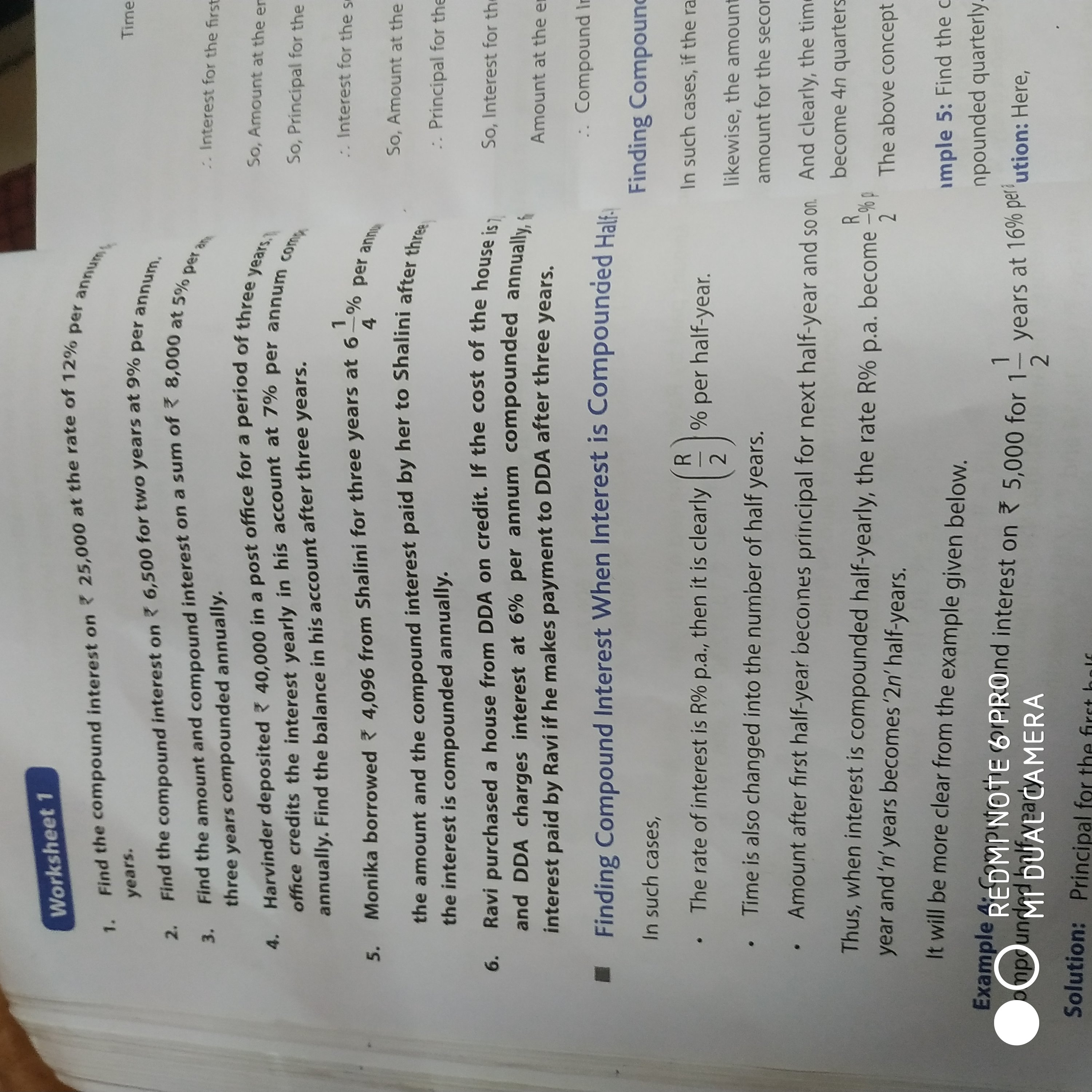Find the compound interest on ₹ 25,000 at the rate of 12% per annum for 3 years. Find the compound interest on ₹ 6,500 for 2 years at 9% per annum. Find the amount and compound int... Find the compound interest on ₹ 25,000 at the rate of 12% per annum for 3 years. Find the compound interest on ₹ 6,500 for 2 years at 9% per annum. Find the amount and compound interest on a sum of ₹ 8,000 at 5% per annum compounded annually for 3 years. Harvinder deposited ₹ 40,000 in a post office for 3 years at 7% per annum compounded annually. Find the balance in his account after 3 years. Monika borrowed ₹ 4,096 from Shalini for 3 years at 6% per annum. Find the amount and total interest paid by her to Shalini after 3 years. Ravi purchased a house on credit costing ₹ 2,00,000 with DDA charges at 6% per annum compounded annually. Find the interest paid by Ravi if he pays DDA after 3 years.

Understand the Problem
The question consists of multiple problems related to calculating compound interest based on given principal amounts, rates of interest, and time periods. It requires applying the formula for compound interest for different scenarios and amounts.
Answer
The compound interest on ₹25,000 at 12% for three years is ₹9,274.
Answer for screen readers
For the first question, the compound interest is ₹9,274.
Steps to Solve
-
Identify the Variables for Problem 1 For the first question, we need to define the principal, rate of interest, and time:
- Principal (P) = ₹25,000
- Rate (R) = 12% per annum
- Time (T) = 3 years
-
Use the Compound Interest Formula The formula for compound interest (CI) is: $$ A = P \left(1 + \frac{R}{100}\right)^T $$ where (A) is the total amount after time (T).
-
Calculate the Total Amount Substitute the values into the formula: $$ A = 25000 \left(1 + \frac{12}{100}\right)^3 $$
-
Calculate the Compound Interest First, compute (A), then the compound interest (CI) can be found using: $$ CI = A - P $$
-
Perform Calculations for All Problems Repeat the same steps for other problems (2-6) with their respective values for principal, rate, and time.
For the first question, the compound interest is ₹9,274.
More Information
Compound interest accounts for interest on the previous interest earned, making it higher than simple interest over the same period. For example, with a higher interest rate or longer period, the total amount increases significantly.
Tips
- Forgetting to convert the rate from a percentage to a decimal.
- Not using the total amount when calculating compound interest; always remember to subtract the principal.
- Misreading the time period; it's crucial to keep track of whether the interest is compounded annually, semi-annually, etc.
AI-generated content may contain errors. Please verify critical information